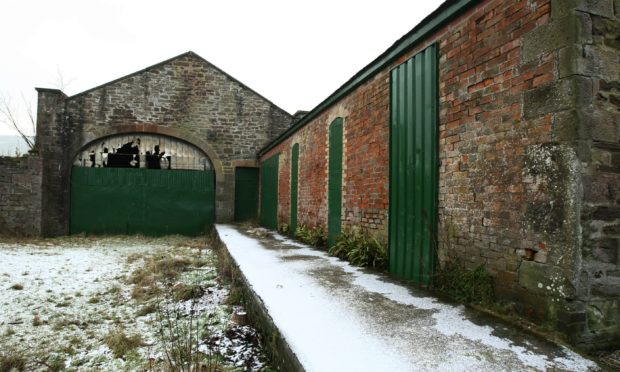Railway history buffs are celebrating after plans to turn an abandoned Tayside station into housing went off track.
Developers wanted to convert the derelict Category B former railway buildings at the end of the Dundee to Newtyle line, which closed in 1955, into four family homes.
The project stalled after it was criticised by staff at Historic Environment Scotland for diminishing “the listed building’s architectural and historic interest.”
However, the architect behind the scheme has signalled that the plans are likely to re-emerge with changes to the design.
The former railway station at Newtyle was built in the early 1830s as the terminus of the Dundee and Newtyle Railway, one of the earliest railways in Scotland.
Enthusiast Clive Luhrs, who runs a transport book wholesaling service in Coupar Angus, said the plans showed “no understanding of the historical importance of the buildings.”
Mr Luhrs, who was involved in a successful campaign to save Liverpool Road station in Manchester in the 1970s, said the Newtyle application involved “one of the earliest and probably the oldest surviving railway goods sheds in Britain and indeed internationally.”
He said: “The building was constructed for the Dundee and Newtyle Railways – the first railway to be built north of the River Tay.
“The historic and industrial archaeological relevance of the goods shed is therefore of great significance.”
Mr Luhrs was one of four members of the public to object to the housing plan.
A previous application to transform the building into an office and storage rooms in 2015 was successful, but was never acted upon.
Claire Herbert, of Aberdeenshire Council’s archaeology service, said the former railway buildings were among the earliest surviving examples in Scotland and had recommended that planners ensure a historic record of the building was made for inclusion in the National Record before any work began.
Developers wanted to transform the currently derelict building into four three-bedroom homes with gardens and car parking.
Architect Peter Inglis said in his statement supporting the application: “The building is not going to be significantly altered by this proposal and the character of the railway shed will be preserved.
“This constitutes a good re-use of a listed building and will preserve its useful life for some time to come.”
He said constructing new family homes in the core of the village would also help to sustain the community.
Mr Inglis confirmed he had withdrawn the most recent application, adding: “We are now in the process of making adjustments to the design before resubmitting.
“I am very conscious of the historic nature of the building.”
